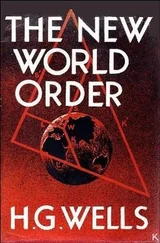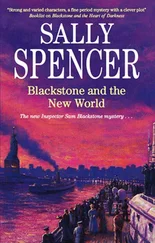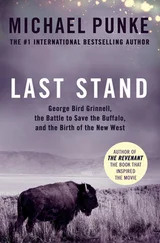The other possible outcome was only slightly more hopeful: to hit bottom. To realize what has happened to us, because we have no other choice. “If we refuse to regulate ourselves, the only regulators are our environment,” says Whybrow, “and the way that environment deprives us.” For meaningful change to occur, in other words, we need the environment to administer the necessary level of pain.
IN AUGUST 2011, the same week that Standard & Poor’s downgraded the debt of the United States government, a judge approved the bankruptcy plan for Vallejo, California. Vallejo’s creditors ended up with five cents on the dollar, public employees with something like twenty and thirty cents on the dollar. The city no longer received any rating at all from Moody’s and Standard & Poor’s. It would take years to build the track record needed to obtain a decent rating. The absence of a rating mattered little, as the last thing the city needed to do was to go out and borrow money from strangers.
More out of idle curiosity than with any clear purpose, I drove up again to Vallejo and paid a call on the fire department. In the decay of our sense of common purpose, the firefighters are a telling sign that we are approaching a new bottom. It isn’t hard to imagine how a police department might wind up in conflict with the community it’s hired to protect. A person who becomes a police officer enjoys the authority. He wants to stop the bad guys. He doesn’t necessarily need to care for the people he polices. A person who becomes a firefighter wants to be a good guy. He wants to be loved.
The Vallejo firefighter I met with that morning was named Paige Meyer. He was forty-one years old. He had short salt-and-pepper hair and olive skin, with traces of burn marks on his cheeks. His natural expression was a smile. He wasn’t particularly either religious or political. (“I’m not necessarily a God guy.”) The closest thing he had to a religion, apart from his family, was his job. He was extremely proud of it, and of his colleagues. “I don’t want this to sound arrogant at all,” he said. “But many departments in nicer communities, they get a serious fire maybe once a year. We get them all the time.” The Vallejo population is older and poorer than in many surrounding cities, and older still are the buildings it lives in. The typical Vallejo house is a charming, highly inflammable wooden Victorian. “In this town we fight fires,” says Meyer. “This town rips .” The department was shaped by its environment: they were extremely aggressive firefighters. “When I came to this department you rolled to a fire,” he said. “You were not going to see an exterior water stream from this department. We’re going in. You have some knucklehead calling in with a sore throat—your giddyup is not so fast. But I’ll tell you something about this department. They get a call that there’s a baby choking or a ten-year-old not breathing, you better get out of the way, or you’re going to get run over.”
As a young man, to pay his way through college, Meyer had worked as a state beach lifeguard at lakes in central California. He assumed that there would be little drama in the work but people would turn up, get drunk, and attempt to drown. A few of the times he pulled people from the water, they were in bad enough shape that they needed paramedics; the fire department was there on the spot. He started talking to firefighters and found that “they all absolutely loved what they did. You get to go and live and create a second family. How can you not like that?” He came to Vallejo in 1998, at the age of twenty-eight. He had left a cushy job in Sunnyvale, outside San Jose, where there aren’t many fires, precisely because he wanted to fight fires. “In other departments,” he says, “I wasn’t a firefighter. The first six months of the job here, I was out at two in the morning at a fire every other week. I couldn’t believe it.” The houses of Vallejo are mainly balloon-frame construction. The interior walls have no firebreaks: from bottom to top, all four walls carry fire as efficiently as a chimney. One of the rookie mistakes in Vallejo is to put the fire out on the ground floor, only to look up and see it roaring out of the roof. “When we get to a fire we say, ‘Boom! Send someone up to the attic.’ Because the fire is going right to the attic.”
Meyer actually had made that rookie mistake. One day not long after he’d arrived, he’d jumped off the truck already breathing air from a tank and raced into what appeared to be a burning one-bedroom apartment. He knocked down the door and put the attack line on the fire and then wondered why the fire wasn’t going out. “It should have been getting cooler, but it was getting hotter and hotter.” Right in front of his face, on his plastic mask, lines trickled down, like rain on a windshield. The old-school firefighters left their ears exposed so they could feel the heat: the heat contained the critical information. Meyer could only see the heat: his helmet was melting. “If your helmet starts to shrivel up and melt, that’s not cool,” he says. A melting helmet, among the other problems it presents, is an indication that a room is about to flash. Flashing, he explains, “is when all combustible materials simultaneously ignite. You’re a baked potato after that.” He needed more water, or to get out; but his ego was invested in staying inside, and so he stayed inside. Moments later a backup arrived, with another, bigger hose.
Afterward, he understood his mistake: the building was three stories, built on a slope that disguised its size, and the fire had reached the attic. “I’m not saying that if the backup hadn’t come when it did I’d be dead,” he says, but that’s exactly what he is saying. The scar on his face is from that fire. “I needed to learn to control my environment,” he said. “I’d had this false sense of security.”
When you take care of something you become attached to it, and he’d become attached to Vallejo. He was extremely uncomfortable with conflict between his union and the citizens, and had found himself in screaming matches with the union’s negotiator. Meyer thought firefighters, who tended to be idealistic and trusting, were easily duped. He further thought the rank-and-file had been deceived both by the city, which lied to them repeatedly in negotiations, and by their own leadership, which harnessed the firefighters’ outrage to make unreasonable demands in the union-negotiated contract with the city. What was lost at the bargaining table was the reason they did what they did for a living. “I’m telling you,” Meyer says, “when I started, I didn’t know what I was getting paid. I didn’t care what I was getting paid. I didn’t know about benefits. A lot of things that we’re politicizing today were not even in my mind. I was just thinking of my dream job. Let me tell you something else: nobody cared in 2007 how much I made. If I made six figures they said, ‘Shit, man, you deserve it. You ran into a burning building.’ Because everyone had a job. All they knew about our job is that it was dangerous. The minute the economy started to collapse, people started looking at each other.”
Today the backup that may or may not have saved him is far less likely to arrive. When Vallejo entered bankruptcy, the fire department was cut from 121 to 67, for a city of 112,000 people. The department handles roughly 13,000 calls a year, extremely high for the population. When people feel threatened or worried by anything except other people, they call the fire department. Most of these calls are of the cat-in-the-tree variety—pointless. (“You never see the skeleton of a cat in a tree.”) They get calls from people who have headaches. They get calls from people who have itches where they can’t scratch. They have to answer every call. (“The best call I ever had was phantom leg pain in a guy with no legs.”) To deal with these huge numbers of calls, they once had eight stations, eight three-person engine companies, a four-man truck company (used only for actual fires and rescue calls), one fireboat, one confined space rescue team, and a team to deal with hazardous materials. They now are down to four stations, four engines, and a truck.
Читать дальше












